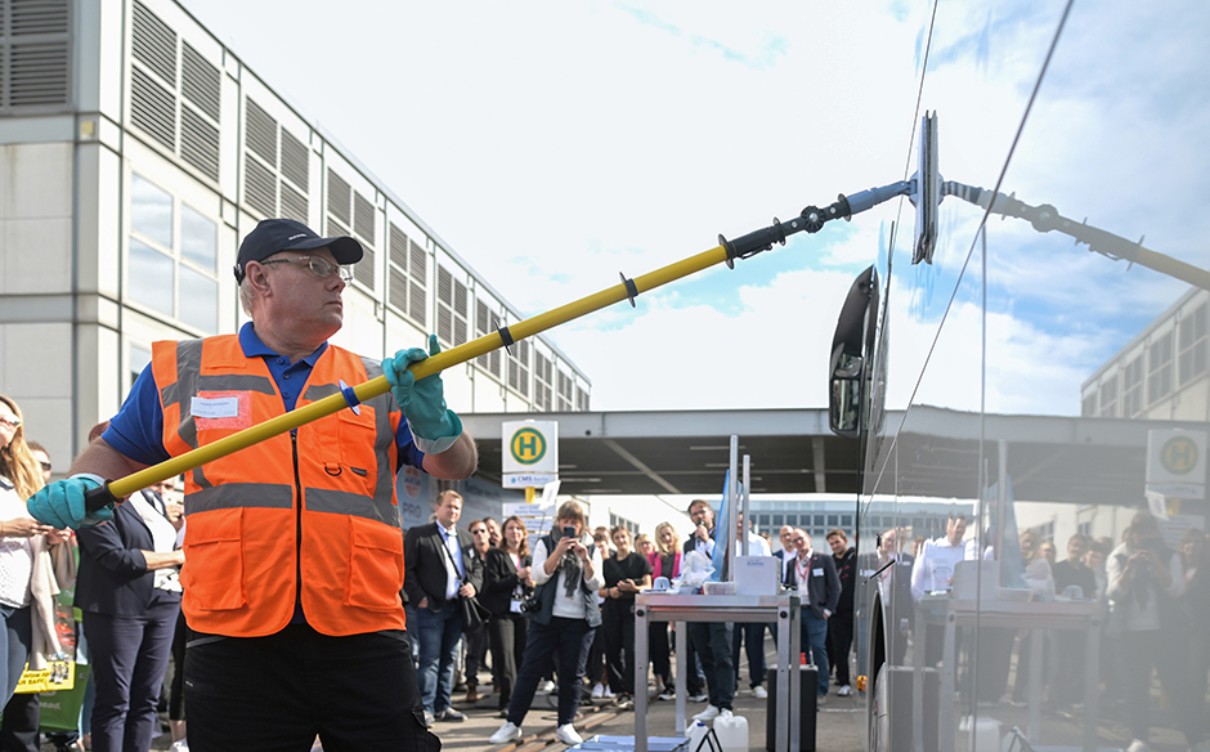Page content
How to clean vehicles successfully and sustainably
In a speech at CMS Berlin, the leading trade fair for cleaning and hygiene, Alexander Bernhard, Head of International Marketing at Tana Chemie AG, said that cleaning trains, buses or planes is like a pit stop during a car race: it has to be as quick and efficient as possible, and it should also protect the environment.
Bernhard thus succinctly summed up the core theme of the Mobility Cleaning Circle (MCC), which took place at CMS Berlin on 20 September. This was the third time that InnoTrans and CMS Berlin had invited representatives from the transport sector and the cleaning industry to an exclusive exchange of views where they could discuss the special challenges of cleaning vehicles and ways of dealing with them. This year, sustainability was the main focus of the event, in which about 70 experts participated.
Getting the customers on board
"These sustainability issues concern us all: customers, suppliers and ourselves as service providers," noted Tom Dreiner, Managing Director of Transport Maintenance and Building Cleaning at WISAG Gebäudereinigung Holding during the panel discussion at the start of the MCC. His company has set itself the goal of achieving zero carbon emissions by 2024.This is quite expensive, and in the end the customers will have to be prepared to pay for it. It is important to approach sustainability as a top-down issue: with a clear goal set by owners and managers, who then inspire the employees. And there is still great potential in interlinking along the supply chain.
Integrating cleaning into the design
Ramona Belkot, who is responsible for vehicle and maintenance management at metronom Eisenbahngesellschaft mbH, agrees. "When you look at a vehicle from the inside, you wonder what the manufacturers can have been thinking about." she said. In trains there are "hundreds of corners and edges" which cannot be reached for cleaning. If manufacturers would think about cleaning when de- signing a vehicle it would be helpful. The same goes for a deposit system for delivery boxes of cleaning products. And even if passengers don't see whether a vehicle has been cleaned sustainably or not, "we have to push the issue for ourselves." In the end, sustainable solutions are ofteneven more economical than conventional ones.
After the panel discussion and the networking lunch, a tour of the trade fair showed exactly that. In one of the presentations, Dr Schnell showed the live exterior cleaning of a DB Regio Ost long-distance bus with his Purol N-Dry cleaning system, which allows trains and buses to be manually and drip-freecleaned in three steps.

The guests at the MCC could be convinced of the effectiveness of innovative cleaning agents. Photo: Messe Berlin GmbH

